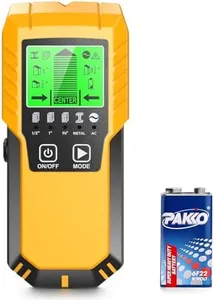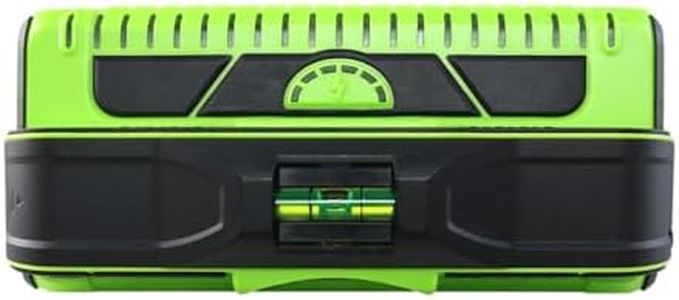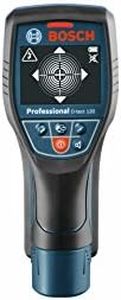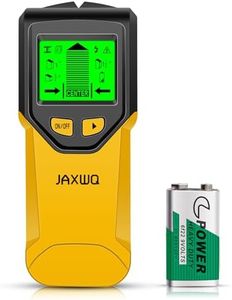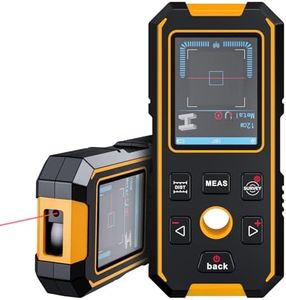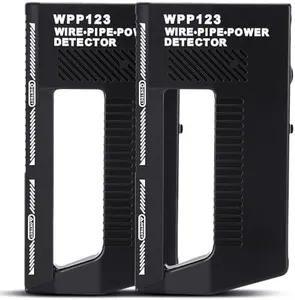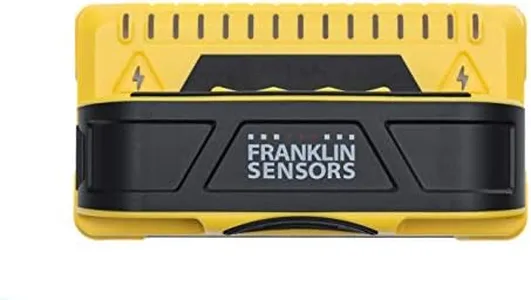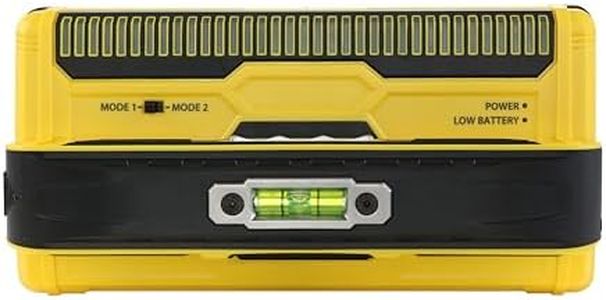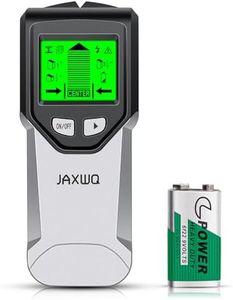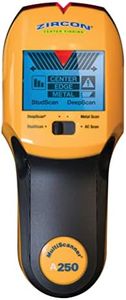10 Best Stud Finders 2025 in the United States
Our technology thoroughly searches through the online shopping world, reviewing hundreds of sites. We then process and analyze this information, updating in real-time to bring you the latest top-rated products. This way, you always get the best and most current options available.

Our Top Picks
Winner
Franklin Sensors ProSensor M210 Stud Finder with 13-Sensors, Wood & Metal Stud Detector/Wall Scanner, Live Wire Detection (Green), Made in The USA
Most important from
4992 reviews
The Franklin Sensors ProSensor M210 stands out in the stud finder category thanks to its use of 13 sensors, which is much higher than typical models with only one or two. This multi-sensor design helps it detect studs more accurately and quickly, showing both the center and edges of studs on its LED display. This means you can see if a stud is single, double, or oddly shaped—something many other stud finders won’t reveal. It also scans up to about 1.5 inches deep, suitable for most interior walls like drywall and sheetrock.
The ProSensor M210 works in just one mode and requires no calibration, so it’s very easy to use even if you’re new to stud finders. This simplicity also means fewer mistakes or false readings, and you can start scanning anywhere on the wall, including over studs. Additionally, it includes a live wire detection feature to help you avoid electrical hazards. The device is compact and lightweight, making it comfortable to hold during use. However, it does require two AA batteries, which are not included, so you’ll need to have those ready.
While it doesn’t offer multiple modes for different materials like some other finders, its single mode adapts automatically to various surfaces and depths, which works well for typical home projects. The ProSensor M210 is a reliable, user-friendly tool suitable for homeowners, decorators, and professionals who need a fast and precise way to locate studs and avoid live wires within walls.
Most important from
4992 reviews
PREXISO 2-in-1 Stud Finder with Laser Level, Rechargeable Multi Surface Cross Line Laser & Wall Stud Scanners Tool for Hanging Frames & Picture, Wood Ac Wire Metal Studs Joist Pipe Detection
Most important from
346 reviews
The PREXISO 2-in-1 Stud Finder with Laser Level is a handy tool combining a stud detector and a laser level in one device, which makes it especially useful if you often hang pictures or shelves. It detects wood and metal studs behind drywall up to about 3/4 inch thick and can sense live electrical wires up to 1.5 inches away, helping to keep you safe. The device uses automatic detection with visual LED lights and sounds to signal stud edges, improving accuracy when marking.
The laser level projects clear horizontal and cross lines, useful for aligning items on the wall, and includes bubble vials for extra precision even in dim lighting. Its rechargeable battery and multiple mounting options add convenience. However, the stud finder requires careful calibration before use, and the self-adhesive strips may not stick well on rough or dusty surfaces. Also, the laser and detection functions operate separately, so you need to switch modes depending on the task.
Although it’s not the deepest detector on the market, the combination of features makes it a practical choice for everyday home projects, especially for users who want a multi-purpose tool without complicating things.
Most important from
346 reviews
BOSCH D-TECT120 Wall and Floor Detection Scanner, Includes 4 AA Batteries & Hard Carrying Case
Most important from
274 reviews
The BOSCH D-TECT120 is a versatile stud finder that works on walls and floors, making it suitable for various home and professional projects. Its main strength lies in its spot detection ability, which means it instantly identifies objects without needing complicated back-and-forth scanning. This saves time and simplifies the process, especially for users who want a straightforward tool. The device doesn’t require calibration, so it’s ready to use immediately after switching it on, reducing the chance of user error.
It offers three detection modes—drywall, universal, and concrete—allowing it to detect a wide range of materials including metals, wood, live wires, and plastic pipes. This broad detection makes it more reliable for different surfaces and helps avoid accidental damage when drilling or cutting. The scanner has a clear traffic light system (green, orange, red) to easily show when you’re near or have found an object, which greatly enhances ease of use. Ergonomically designed with soft-grip areas, it feels comfortable to hold for longer periods.
The included hard carrying case and batteries add convenience, although the device is slightly heavier than simpler models, which could affect portability. This stud finder stands as a solid choice for homeowners and professionals who want a reliable, multi-surface scanner that’s easy to use and versatile.
Most important from
274 reviews
Buying Guide for the Best Stud Finders
Choosing the right stud finder can make a huge difference when you’re hanging shelves, TVs, or artwork on a wall. Stud finders help you locate studs (the wooden framework) behind your walls, so you know where it’s safe and secure to drill or nail. To pick the best stud finder, you should consider how it works, what types of walls you may use it with, and what kinds of features suit your needs. Reading product details and understanding the key specifications will help you find one that’s easy to use and accurate for the tasks you plan to tackle.FAQ
Most Popular Categories Right Now
